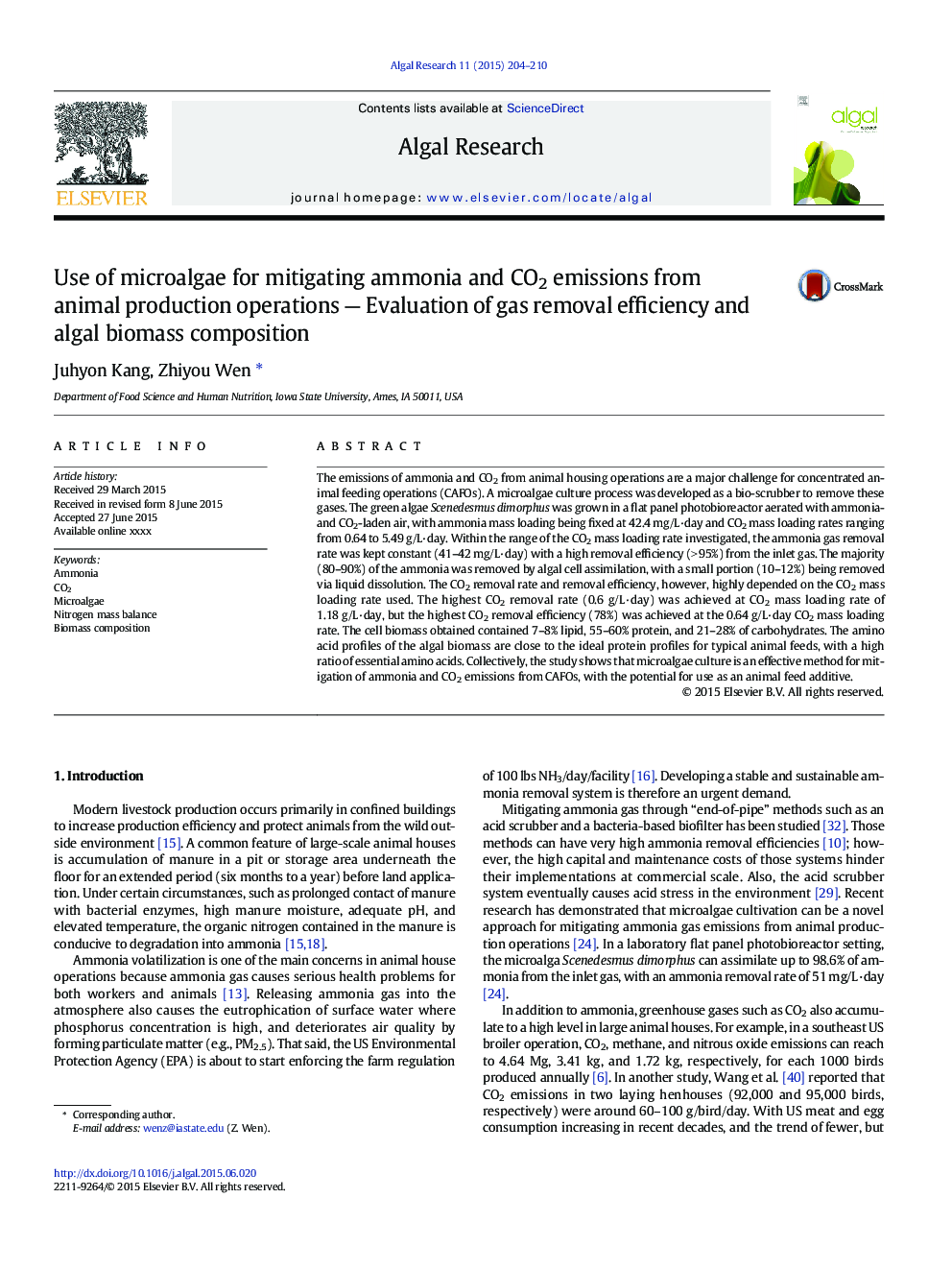| Article ID | Journal | Published Year | Pages | File Type |
|---|---|---|---|---|
| 8088123 | Algal Research | 2015 | 7 Pages |
Abstract
The emissions of ammonia and CO2 from animal housing operations are a major challenge for concentrated animal feeding operations (CAFOs). A microalgae culture process was developed as a bio-scrubber to remove these gases. The green algae Scenedesmus dimorphus was grown in a flat panel photobioreactor aerated with ammonia- and CO2-laden air, with ammonia mass loading being fixed at 42.4 mg/L·day and CO2 mass loading rates ranging from 0.64 to 5.49 g/L·day. Within the range of the CO2 mass loading rate investigated, the ammonia gas removal rate was kept constant (41-42 mg/L·day) with a high removal efficiency (> 95%) from the inlet gas. The majority (80-90%) of the ammonia was removed by algal cell assimilation, with a small portion (10-12%) being removed via liquid dissolution. The CO2 removal rate and removal efficiency, however, highly depended on the CO2 mass loading rate used. The highest CO2 removal rate (0.6 g/L·day) was achieved at CO2 mass loading rate of 1.18 g/L·day, but the highest CO2 removal efficiency (78%) was achieved at the 0.64 g/L·day CO2 mass loading rate. The cell biomass obtained contained 7-8% lipid, 55-60% protein, and 21-28% of carbohydrates. The amino acid profiles of the algal biomass are close to the ideal protein profiles for typical animal feeds, with a high ratio of essential amino acids. Collectively, the study shows that microalgae culture is an effective method for mitigation of ammonia and CO2 emissions from CAFOs, with the potential for use as an animal feed additive.
Related Topics
Physical Sciences and Engineering
Energy
Renewable Energy, Sustainability and the Environment
Authors
Juhyon Kang, Zhiyou Wen,
